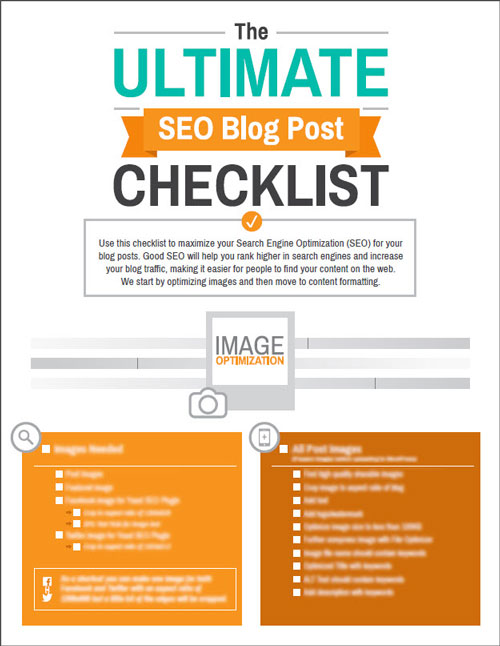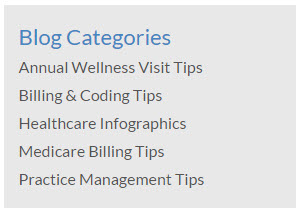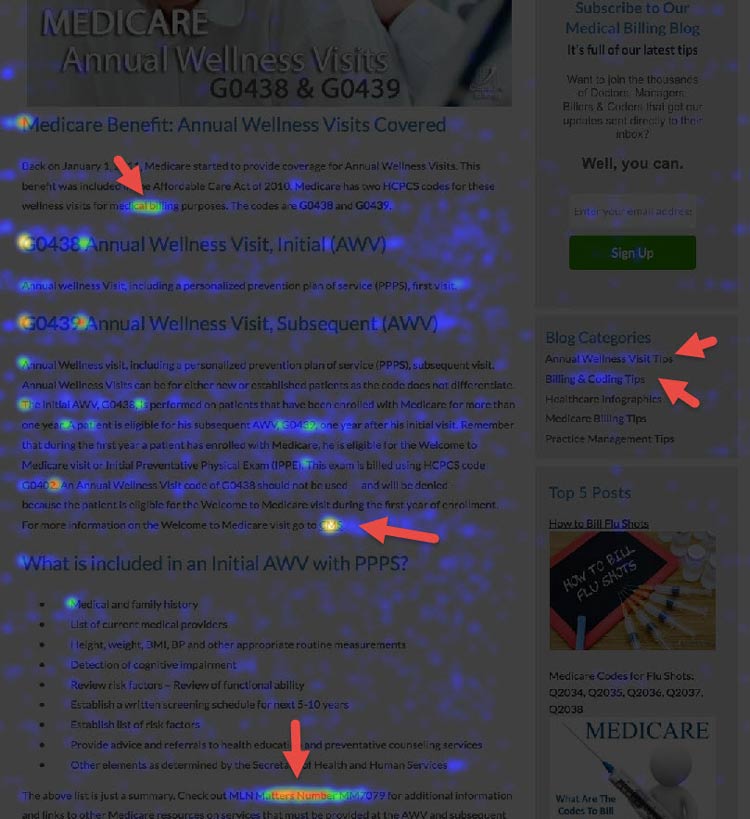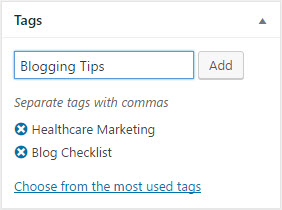Laureen shows you her proprietary “Bubbling and Highlighting Technique”
Download your Free copy of my "Medical Coding From Home Ebook" at the top right corner of this page 2018 CPC Practice Exam Answer Key 150 Questions With Full Rationale (HCPCS, ICD-9-CM, ICD-10, CPT Codes) Click here for more sample CPC practice exam questions with Full Rationale Answers Click here for more sample CPC practice exam questions and answers with full rationaleTag Archives: checklist
Joint Commission’s new emergency management checklist
On October 10, Hurricane Michael made landfall in Florida, forcing at least two hospitals to evacuate all of their patients after their buildings sustained heavy damage. On the same day, The Joint Commission (TJC) published a new Emergency Management Health Care Environment Checklist on its website, which helps healthcare organizations that are reopening their facilities after a disaster.
Featured member resource: ADR appeal documentation checklist
E/M Checklist
Check(list) your ER for suicide risks
With the renewed focus on ligature and self-harm, facilities need to undergo a complete reassessment of the physical environment where patients with behavioral or mental health problems are cared for. That goes especially for emergency departments. Annually, 460,000 emergency department visits occur following cases of self-harm, and those patients are six times more likely to make another suicide attempt in the future.
Adding venous thromboembolism to the CDI checklist at your facility
- Altered blood flow
- Vascular endothelial injury
- Alterations in the blood constituents, or hypercoagulable state
A patient with an abnormally increased tendency toward coagulation may be said to experience a hypercoagulable state. Hypercoagulable states can be further specified as primary or secondary. Primary hypercoagulable states are inherited thrombophilia conditions caused by deficiencies or defects of the physiologic anticoagulants or increased coagulation factors, according to the journal Cardiovascular Medicine (2007). The major causes of inherited thrombophilia include factor V Leiden mutation, antithrombin deficiency, protein S and protein C deficiency, and prothrombin gene mutation.
- Clinical evaluation
- Therapeutic treatment
- Diagnostic procedures
- Extended length of stay
- Increased nursing care and/or monitoring
Making a checklist to prepare for the OPPS final rule
Making a checklist to prepare for the OPPS final rule
Editor’s note: Jugna Shah, MPH, president and founder of Nimitt Consulting, writes a bimonthly column for Briefings on APCs, commenting on the latest policies and regulations and analyzing their impact on providers.
The 2017 OPPS final rule will not be out for a couple of weeks, but that doesn’t mean providers can’t be thinking about what their action plan will be once the rule is released.
With only 60 days between the final rule’s release and the January 1 implementation date, providers will be ahead of the curve by spending time now and thinking about the processes they may need to review, change, or implement based on what CMS finalizes and the sort of financial impact the final rule is likely to have.
While I don’t know with 100% certainty what CMS will finalize, revise, delay, or back away from, I offer providers this list of what they should look at immediately upon the rule’s release.
Section 603
With Congress mandating payment changes for all non-grandfathered (those not billing under OPPS prior to November 2, 2015) off-campus, provider-based departments (PBD) starting January 2017, it was no surprise that CMS discussed this issue in the proposed rule. But it was a huge surprise to read CMS’ proposals, which, if finalized, would greatly impact otherwise protected grandfathered locations under Congress’ Section 603.
For example, CMS proposed that if an off-campus PBD moves, changes ownership, or expands its services beyond what it was providing as of November 2, 2015, as defined by APC-based clinical families, then its grandfathered status would be impacted. While this may sound relatively simple, the payment and operational impact would be a nightmare.
There is another aspect of Section 603 and CMS’ proposal to use the Medicare Physician Fee Schedule (MPFS) as the "applicable payment system" for Medicare Part B services provided at non-grandfathered locations or deemed "non-excepted." Specifically, there are many services for which the MPFS has no facility component for the facility costs associated with performing the procedure because they are only provided in hospital outpatient departments or ambulatory surgery centers. For these services, the industry has to wonder what CMS was thinking, as the agency cannot possibly expect to pay nothing for services that would continue to be rendered in off-campus PBDs.
CMS’ unexpected and hastily configured proposals create such large operational and financial problems that the industry is hoping the agency will simply retreat and delays the implementation of Section 603, or at a minimum revert to paying grandfathered facilities under the OPPS for all of their services, regardless of clinical service expansion, site relocation, or ownership changes. There is precedent for CMS to postpone implementation beyond statutory deadlines. If there were ever a situation where delay is advised, this is one.
Hopefully, providers sent in a surfeit of comments regarding these and other issues and outstanding questions related to the agency’s Section 603 implementation proposals. I hope CMS will acknowledge its proposals have administrative, operational, and financial gaps that are so large, it will be impossible to move forward by January. But even if CMS does choose to put off its proposals until proper payment mechanisms are developed, Congress was clear in its language requiring changes by January 1, 2017, so something is likely going to have to occur.
CMS’ proposals, if finalized, would have drastic long-term implications for all providers, including those who believe that their grandfathered status would protect them; the sad reality is that under CMS’ proposals, there will be massive operational and financial impact, so this is the first topic in the final rule that everyone should review.
Packaging proposals
Providers have gotten used to CMS expanding packaging in each OPPS rule, as the agency calls packaging an essential part of a prospective payment system. With CMS’ expansion of lab packaging from date of service to claim level this year, we should not be surprised if the agency finalizes its proposal of expanding the conditional packaging logic of CPT codes assigned to status indicators Q1 and Q2 to the claim level.
Claim-level packaging of these types of ancillary services will have a huge financial impact on providers submitting multiday claims, such as those for chemotherapy and radiation therapy services, despite the fact that multiday claims for these types of services are not required.
Currently, status indicators Q1 and Q2 are packaged into other OPPS services when provided on the same date of service, even when submitted on a claim that spans more than one day. If CMS finalizes its proposal, providers that continue submitting multiday claims when monthly or series claims are not required should not be surprised when they find themselves no longer receiving separate payment for many services.
This is the time for providers to assess whether they submit multiday claims for any services beyond the required repetitive services listed in the Medicare Claims Processing Manual, Chapter 1, section 50.2.2. While it is true the manual states that is is an option to bill nonrepetitive services on multiday claims, it did not have financial implications. At least, until this year, with the claim-based packaging of labs and proposal for claim-based packaging of Q1 and Q2 services. Providers should determine why they are billing multiday claims and what it would take to change their billing processes. If they elect not to move away from multiday claims, then assessing the financial impact that will occur is an important exercise to go through prior to January 1.
The other packaging proposal providers should look for in the final rule involves the use of modifier -L1 for reporting unrelated laboratory tests when they occur on a claim with other OPPS services. CMS proposes to delete the modifier for CY 2017 as it believes that the vast majority of labs should be packaged regardless of whether they are unrelated to other OPPS payable services.
This would have a big impact on providers who provide reference laboratory or nonpatient services, which the agency requires to be reported on the same claim as other OPPS services performed on the same date. Today, the use of the -L1 modifier allows providers to identify these services as separate and unrelated to the other OPPS services so that payment is received from the Clinical Laboratory Fee Schedule.
If CMS finalizes its proposal to eliminate modifier -L1, we can hope the agency will also update its instructions for reporting reference laboratory services so they can be separately paid even when provided on the same date of service or claim as other OPPS services. If CMS does not make a change, then providers can again expect to see a large financial impact. Both of these packaging proposals should be looked at immediately in the final rule.
Device-intensive procedures
The final set of proposals providers will want to review relates to the changes proposed for device-intensive procedures. This is a place where we hope to see CMS finalizing changes as proposed.
For example, CMS proposes to use the implantable device cost-to-charge ratio (CCR) to calculate pass-through device payments for hospitals that file cost reports designating that cost center, as this is a more accurate CCR for determining separate pass-through payment. Currently, only about two-thirds of hospitals use the implantable device CCR, which means the remaining one-third need to examine their cost reporting process.
Providers should determine whether they are in the group that reports the implantable cost center; if a provider is not reporting, it should find out why and begin making changes. This will have an impact on facilities’ ability to generate much better pass-through payment going forward, when applicable. It will also ensure future payment rates for device-intensive procedures reflect more accurate payment of the device.
Finally, it will be interesting to see whether CMS finalizes the addition of another 25 comprehensive APCs (C-APC) encompassing 1,844 additional status indicator T services; if it does, a financial impact analysis of these services will also be important, as this will be a large increase in C-APCs for a one-year span.
I plan to discuss these and other final rule changes in my next column, as well as in HCPro’s annual OPPS final rule webcast December 1 (see www.hcmarketplace.com for details), but in the meantime I hope the above checklist will be useful to providers now and in the first weeks of the rule’s release.
A holiday checklist for HIM managers
The Ultimate Blog Post Checklist: A Case Study
This post about my Ultimate Blog Post Checklist is a little off topic but not really. You see, in order to reach as many people as possible with my medical billing blog I need to optimize my blog posts for search engines.
I recently joined a group called The Healthcare Writers Network. My new colleague Carol Bush spearheads the group. She was excited to see what I had done with Capture Billing’s blog and how it had grown from only a couple visitors a day to a couple thousand daily.
Carol interviewed me about my process and wrote the case study below. I thought I would share her article with you and let you in behind the scenes to show you what I do to get my blog posts out to you.
And if you haven’t started blogging for your medical practice, I would start today. It’s a great way for new patients to find you, and a great way to keep your current patients engaged.

Search engines are the #1 driver of traffic to content sites, beating social media by more than 300 percent. And, companies that blog have 434 percent more indexed pages than those that do not. Blogging, however, is not a post-it-and-see-results marketing channel; to be effective, it requires promotion and SEO optimization.
Optimizing a business blog can seem like a daunting task, especially in an industry such as healthcare that relies on trust and confidence between company and customer. However, many people don’t realize that a blog is one of the most important marketing channels, and that SEO optimization can be made easy.
Simply put, good search engine optimization for a blog will help businesses rank higher in search engines and increase their overall traffic, making it easier for people to find a business’s content on the web.
A Case Study in Blogging: Manny Oliverez & Capture Billing
 Manny Oliverez, CEO and Co-founder of Capture Billing, experienced success with taking a business blog from zero to hero status, all with the help of The Ultimate SEO Blog Post Checklist, which he created as a way to stay organized.
Manny Oliverez, CEO and Co-founder of Capture Billing, experienced success with taking a business blog from zero to hero status, all with the help of The Ultimate SEO Blog Post Checklist, which he created as a way to stay organized.
His business, which serves small to midsize practices that often lack the resources or capital to invest in high-end software or an outstanding billing staff, has taken over for other companies that charge more than Capture Billing does.
How has he accomplished this?
Oliverez is an active social media user who has learned the value of promoting his medical billing company and healthcare content through digital marketing and SEO optimization.
Blogging in the Healthcare Industry
When asked how he uses blogging as a marketing channel for his business in the healthcare industry, Oliverez simply replied, “The blog is an important way to get information out there. It is informational on how to bill, and it helps doctors, practice practice and billers.”
While Oliverez is well-known for his knowledge of the importance of quality blogs and online marketing content in any type of industry, he thinks it’s especially paramount for businesses in the healthcare industry to understand the effects that relevant, engaging content can have on a marketing campaign.
“Blogging for the healthcare industry is different in the sense that you are putting information there that has to be correct because healthcare is so regulated. You have to make sure your information is correct. So, we usually put references from Medicare or physician associations so people can see that what I’m saying is backed up.”
How the Checklist Changed the Blogging Process
 Oliverez speaks about the checklist as a way to “stay organized and not to forget any piece of the puzzle. Really, blogging is a big SEO puzzle, and the checklist helps me make sure my posts are optimized the best they can be for Google.”
Oliverez speaks about the checklist as a way to “stay organized and not to forget any piece of the puzzle. Really, blogging is a big SEO puzzle, and the checklist helps me make sure my posts are optimized the best they can be for Google.”
The checklist has changed the blogging process for Oliverez and many others, since it is designed to make forgetting obsolete. Simply put, the checklist is a combination of many things that make a blog successful designed in a way that allows for easier workflow and optimized organization.
“There are so many moving parts that it is easy to forget something. By checking things off as I go, I make sure I’m not forgetting a piece. I have a list to make sure I cover all of the smaller parts so it can become successful on a larger scale.”
Want to find out exactly how he did it? Take a look as we break down, step by step, just how easy managing a business blog can be.
Images Needed
As a shortcut, one image is needed for both Facebook and Twitter, with an aspect ratio of 1200×600, even though a bit of the edges will be cropped. Oliverez suggests remaining flexible on this step.
“Assuming that you have your copy already done, I would start on page two of the checklist with the SEO and the formatting. You don’t need your pictures just yet, and you may get your inspiration through working on the post for the right image. Assuming that people are using WordPress or something very similar that is easy to use, I would paste the copy into the editor and start with the formatting.”
All Post Images
This step includes 10 easy-to-check items that will set you up for a smoother uploading process. For Oliverez, this step is important. “You need to prepare all images before uploading them into WordPress, regardless of when you prepare them during your blogging process.”
Post Permalink
It is important to understand the audience you are trying to target and to know which keywords they are searching for. Regarding the permalink, Oliverez said, “Ensure that the permalink has no stop words (and, or, but, of, the, a, etc.) and contains keywords relevant to your blog’s SEO.”
Format Post
Oliverez said, of this crucial step, “I will add links to references so that the readers know what I’m talking about is correct. What’s also extremely important are links back to other popular content that I’ve already written. It adds authority to my new post and helps it rank a little faster.”
One link, either internal or external, for each 100 words is usually a good rule of thumb, but some posts lend themselves to more links. Afterwards, Oliverez said, “I make sure my keywords and synonyms are incorporated into the blog. I often ask myself, ‘How can I say the same thing in a different way that still makes sense?’”
Furthermore, adding tweetable quotes to your text not only makes the content more interactive with readers, it forces them to focus on a specific, important piece of information in your blog.
Some more questions Oliverez suggested asking are, “Does it have H2 headers? Are there indents and bullet points to make the text look interesting? If there is a huge block of text, forget it, people are going to bounce off the page and look for another website.”
Text Boxes
You can add text boxes for main points to direct readers’ attention to the most important information. “Sometimes, I will put boxes around the text to break it up to make it look better. It pops out some of the main points,” said Oliverez.
Call to Action
A solid call to action at the end of a blog post is essential in order to keep your readers interacting with not only your blog, but your website as a whole.
“It is crucial to understand your audience and how they interact with your business and social media,” Oliverez continued. “I have two avatars that I have developed recently. One is a doctor and one is an office manager. Who are these people? What do they do and what do they like? These are the two readers that I am speaking to when I am writing. These are the people I are trying to reach.”
Oliverez suggests following the checklist strictly here. In addition, adding a question to the end of the post allows readers to comment and engage with your blog and company. “I want people to comment,” he said, “so I will ask a question or ask them to leave their thoughts in the comment section below. Other readers will comment on the comments, so it becomes kind of a community.”
Write an Excerpt
Your excerpt should be so interesting that even you will want to click on the post and read it again! “Usually what happens is that Google takes a few words of the first paragraph, but if you write an excerpt you can tailor it more to what you want to get across,” said Oliverez.
If you have your blog post setup to only show a sentence or two, this is what readers are going to see on a Google search or when they search through your posts.
Yoast SEO Plugin (WordPress)
For this step, it is important to understand the platform to which you are posting. For social media write different Twitter and Facebook titles to cater content to the specific platforms and audiences you will be targeting.
“The title can be a little different than the title of the actual blog to make it more interesting or shorter,” reiterated Oliverez. “Keep in mind the platform you are working on, since different audiences will interact with the post on various platforms.”
Categories
 Select the categories that are most relevant to your post. Oliverez employs this technique by first understanding which categories his clients are searching for and clicking on.
Select the categories that are most relevant to your post. Oliverez employs this technique by first understanding which categories his clients are searching for and clicking on.
“I see, through Google analytics, that people find us through the category listing on the website. Most of my stuff falls under medical billing and coding, but some things are specific to, let’s say, flu shots. I made another category for flu shots so that when someone is looking through the web, they might find that category.”
He added as a tip, “I usually choose a couple of categories so that people can, on the right-hand side, click on posts related to that category.”
Tags
Typically, it is good to only select two to five appropriate tags. As an example, Oliverez pulled up a blog and notes, “This one is about how to code for medicare and flu shots, so my three relevant tags are: medicare, flu shots and coding.” It’s as simple as that!
Post Images
This works best with high-quality images that have been cropped to fit the aspect ratio of the blog. However many pictures you decide to have, this checklist is designed to make sure these are optimized for you.
“Images are also indexed,” added Oliverez. “I’m starting to add more images because everything is about images nowadays. The big thing about images is speed. Google likes your website to be fast, so optimize your images, it is paramount that they load fast, or else Google will rank you lower.”
Featured Image
The featured image should be shareable and relevant. Think of the types of images that catch your eye when you are browsing past posts on your Facebook feed.
“This is your main image. It’s usually at the top of the page. Typically, if readers share the post, that’s the image they go with it,” said Oliverez. For him, finding the perfect image can be the hardest part, as it conveys visually the entire story behind the post.
Download the Ultimate SEO Blog Checklist for Healthcare – CLICK HERE
Oliverez’s Final Thoughts on the Checklist
While this checklist provides a comprehensive way to ensure you’re not missing any piece of the SEO puzzle, Oliverez simplified it all by stating the three most important aspects of any optimized blog are that:
- The blog is well-written.
- The blog is formatted correctly.
- There is a good call to action.
Search “Experience” Optimization
Forbes recently published an article that stated SEO is no longer only about optimizing the search engines in which your blog is searchable, but that it has become more about “search experience optimization.”
What this means is that search engines have started to incorporate algorithms based on user behavior metrics and whether or not the users are getting what they expect from a website.
While this is not specific to healthcare content, it is perhaps more relevant than in other industries. Optimizing a blog not only relies on keywords, but engaging content, shareable images, site structure and call to actions in the form of questions.
Oliverez agreed: “Most of the stuff I write are ‘how-tos,’ which answer questions for the clients, but I have one blog post from about four years ago that is consistently one of my top posts. I answered a question from a gentleman who wanted to know more about his Medicare billing. That’s not my general audience, but I went ahead and answered it because it was interesting, and because it could help billers and the types of questions they get. It became one of the most popular posts.”
Success Starts With the Checklist
With the Ultimate Blog Promotion Checklist, you can be sure your blogging efforts are part of a service offered to clients and potential customers in which you provide quality content, ideas and suggestions in exchange for customer loyalty.
When asked how business owners who are new to blogging can begin to navigate the world of SEO, Manny said, “Don’t stress over the small things. You don’t have to do it all at once. This list has developed over time.”
He recommended taking it step by step. “Start with one piece of it,” he said, citing his own process for utilizing the checklist. “For example, start with just formatting the text part, and then, over time, as you become more comfortable with it, you can begin to work on other things. Eventually, it will come to you and it will become more natural.”
What Do Business Owners Need to Understand About Blogs?
When asked for any closing advice to others, whether new or seasoned bloggers looking to optimize their SEO through the checklist, Manny said, “If you just put a blog post up, it’s just going to sit there. There’s going to be crickets. Part of the checklist I use is for promoting my blog post.” However, promotion is part of another, separate checklist that ensures you are utilizing social media effectively promote your SEO-optimized blog posts.
Manny added to his closing advice, “It is okay to participate in social media, and it really does work. I think it really works well for medical practices because they have a local, geographic area and they can really target those people. I think it’s almost a no brainer, and it’s cheap!”
Capture Billing Results With the Blog Post Checklist
Not long after realizing the importance of actually promoting a blog through SEO, Oliverez saw results. He said of the effectiveness, “After I started optimizing the blog, I began to receive phone calls from people considering me an expert in the field solely based off of what they were reading. People start to notice you and your name. I have been able to help lots of people.”
He now has over 2,000 people visiting his website every day. And, not only are they visiting, but on average they are spending about 12 minutes on his site and are looking at 2 or more pages.
Oliverez added, “I also use something called Crazy Egg, which takes a snapshot of my webpage, and then over a six-day period, it shows me where people are clicking. I look at that and can see which categories people are clicking on, which helps me know which categories people are interested in so I can write more of what they want. It helps me further optimize my blog with the help of the checklist, and right now I have a 1 percent bounce rate and that’s great because 55 percent is average.”

To start optimizing your content and seeing results like Capture Billing, take a look at The Ultimate SEO Blog Post Checklist and begin putting every piece of the SEO puzzle together.
Download the Ultimate SEO Blog Checklist for Healthcare – CLICK HERE
Are you a blogger? If not, what is holding you back from starting a blog for your medical practice? Tell me in the comments below.
— This post The Ultimate Blog Post Checklist: A Case Study was written by Manny Oliverez and first appeared on Capture Billing. Capture Billing is a medical billing company helping medical practices get their insurance claims paid faster, easier and with less stress allowing doctors to focus on their patients.
checklist for chart review
Thanks,
Camille Waterhouse, CPC







